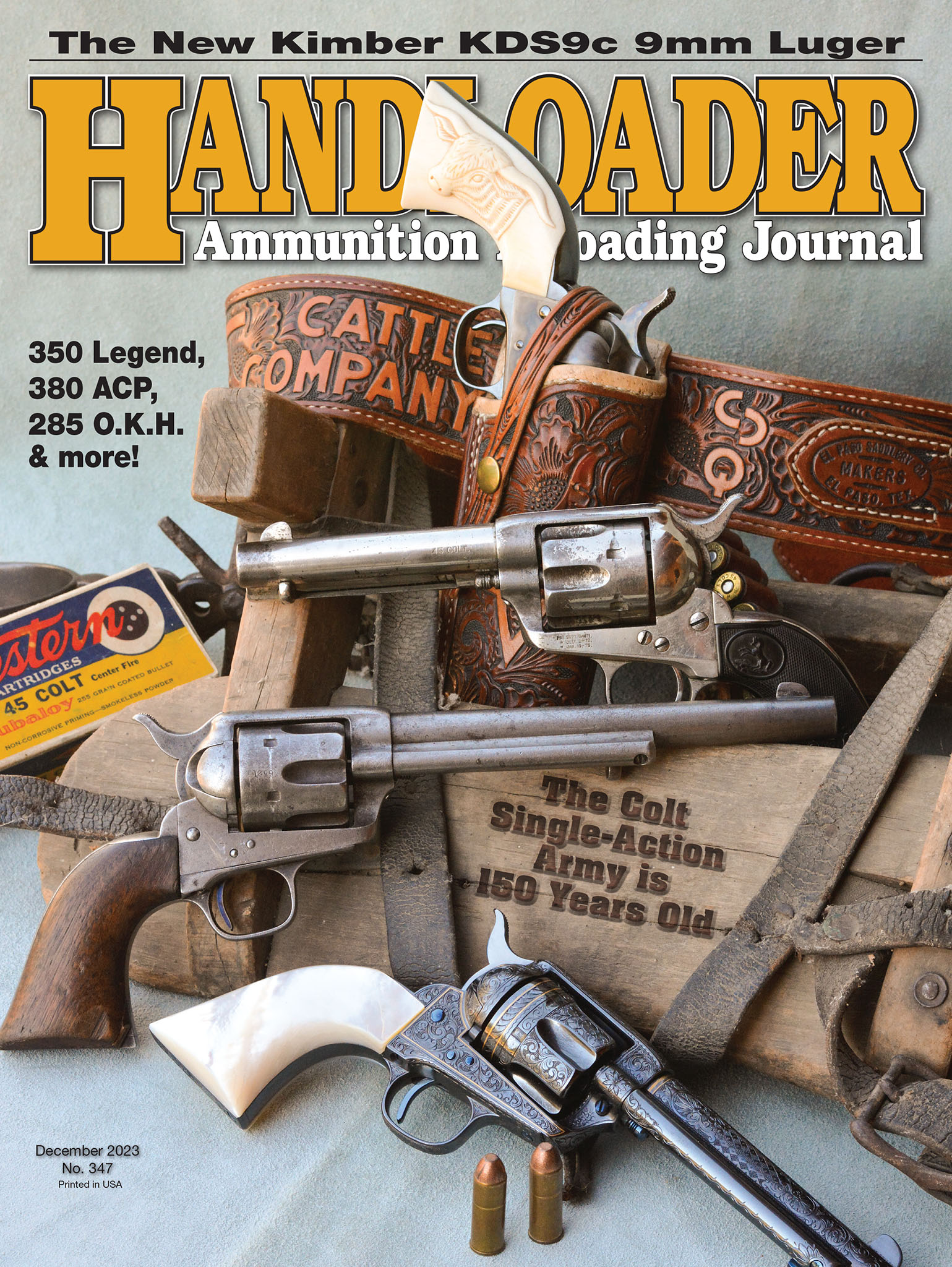Cartridge Board
270 Winchester Short Magnum
column By: Gil Sengel | December, 23
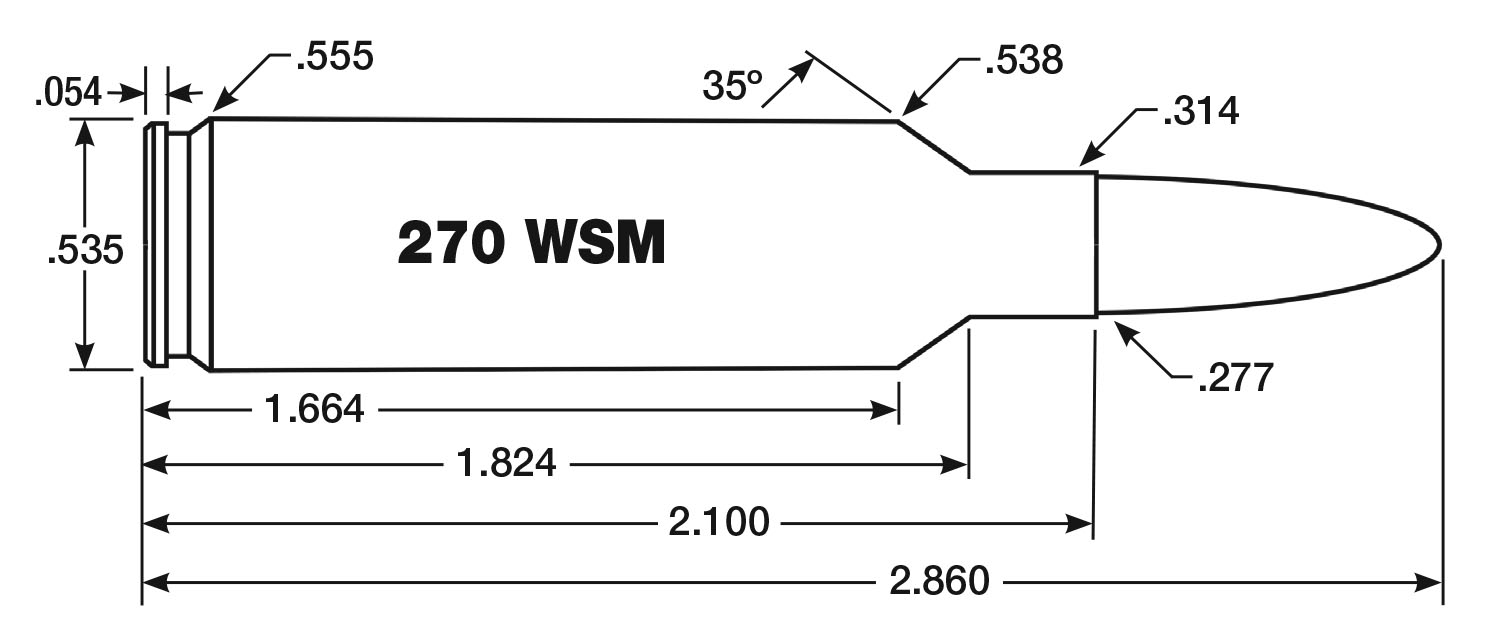
Every year when Dad and his hunting buddies would check the zero of their rifles, someone would invariably ask when he was going to get a modern deer rifle? Dad had several rifles, but his deer rifle was a plain vanilla pre-‘64 Model 70 Winchester chambered in 270 Winchester with a 4x scope. One of his friends called it “that old Jack O’Conner rifle.”
Dad just ignored them. He knew that with a little care in shot placement, his handloads would shoot through any whitetail or mule deer, destroying the lungs or heart or perhaps a few ribs depending upon the path of the bullet. The results were almost the same for elk, but they are thicker than deer, so there was seldom an exit hole. Nevertheless, every animal fell over dead in a few seconds, which I have been given to understand, is the object of this exercise.
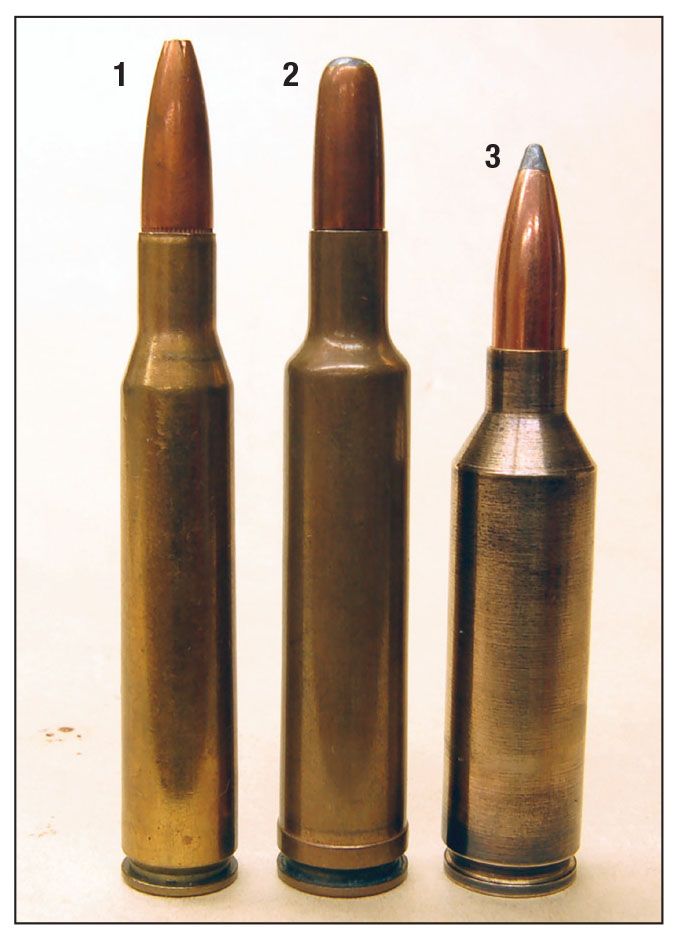
However, by the 1990s, many hunters had come to expect that every animal should be dead in its tracks at the sound of the shot. In my extremely limited experience, this seldom occurs with animals much larger than varmints. Nevertheless, cartridge case volumes got larger and velocities higher culminating in full-length 404 Jeffery cases necked to 7mm and .30 caliber that push heavy-for-caliber bullets at speeds well north of 3,000 feet per second (fps). One-shot kills became more common, at least around campfires and in hunting magazines! A fellow once told me he shot a mule deer using a custom 7mm Remington Ultra Magnum. It was a one-shot kill of course. He didn’t remember the range, but when driving to the dead deer, it was necessary to stop once for gas.
Then, when riflefolk believed that cartridge design had gone as far as it could, Winchester lopped three- quarters of an inch off the large-bodied 404 Jeffery case. It was necked for .30-caliber bullets, given a sharp 35-degree shoulder and almost no body taper. This meant that per unit of length, the new round would have slightly more powder capacity than the 30-06 or standard belted magnum diameter cases. The 404 rim was also reduced by about .020 inch so it would fit the standard magnum bolt face.
The new cartridge was introduced in 2001 as the 300 Winchester Short Magnum (WSM). The first comment made to me on the round was from a fellow who said, “I didn’t know we needed a short magnum since the industry has spent the last 50 years selling us long magnums.”
Necking down the 300 WSM created two new rounds called 270 WSM and 7mm WSM in 2002. The case shape and capacity are identical. A .27-caliber bullet (270 Winchester) is .277 inch in diameter while a 7mm caliber is .284 inch in diameter. That’s a difference of .007 inch, or the thickness of three pages of this magazine. There is simply no difference between the two hunting rounds. This will cause many cases of “laptop fever” to break out as “techie-folk” try to find some detail of difference. It is true both cartridges gain a bit of velocity over the rounds they are supposedly intended to replace, the 270 Winchester and 280 Remington. Handloaders will argue about the exact difference. Our interest here is the 270 WSM.
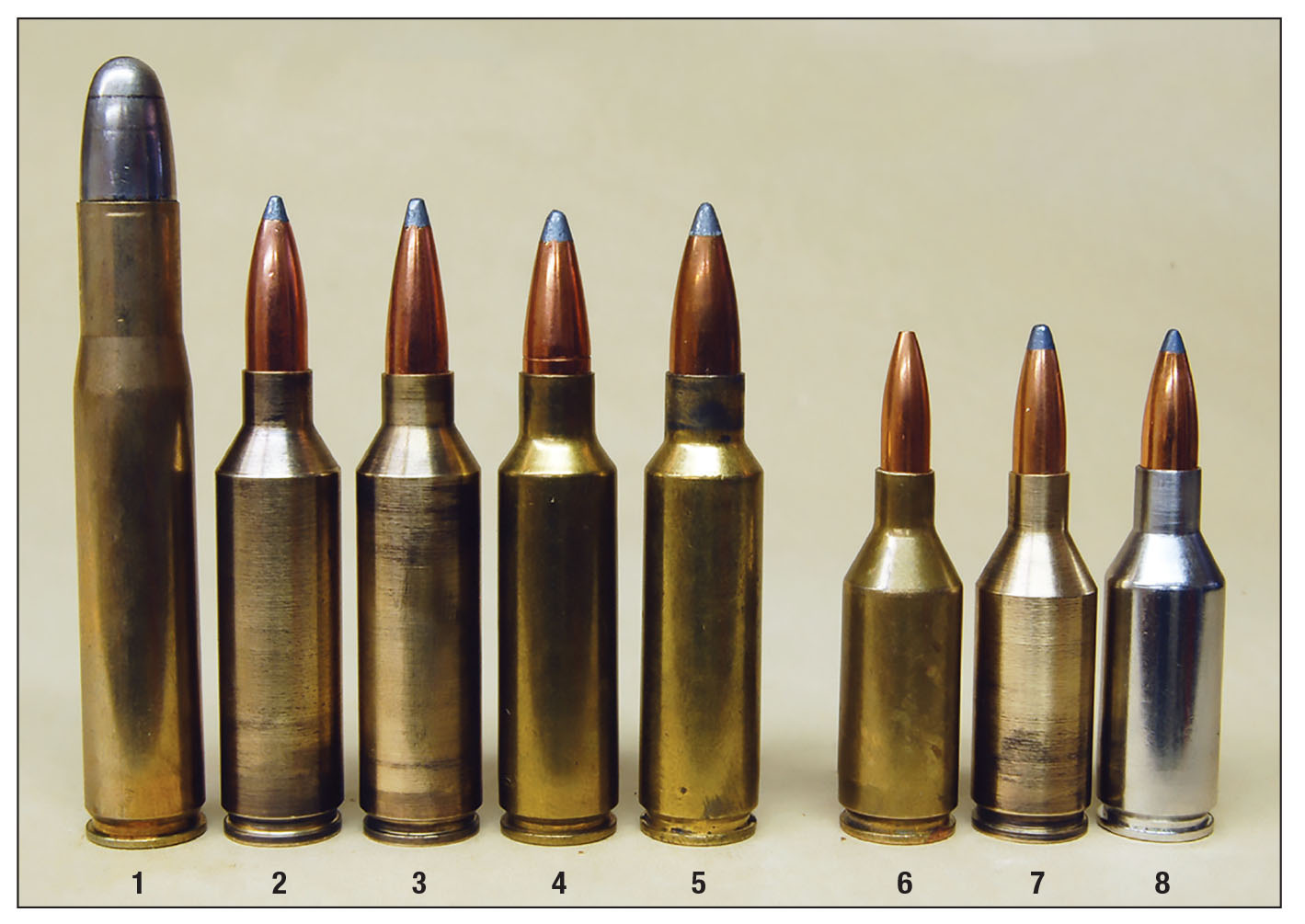
Not only does the 270 WSM look larger than the 270 Winchester, it is larger – about 15 percent larger in capacity to the base of the neck. However, this raw fact is misleading. Since the 270 WSM is only a big-game hunting cartridge, it will be compared to other rounds of similar size and caliber, most obviously, the 270 Winchester, 280 Remington and 270 Weatherby. These older rounds made their reputations with ordinary cup-and-lead-core bullets of mostly one specific weight. Today, many folks want (or are required) to use solid metal (non-lead) bullets for various reasons. Bullet length increases if the standard weight is desired. Deeper seating is mandatory so as to not to exceed the maximum overall cartridge length standard cup and core bullets even protrude into the powder space of the 270 WSM, something that doesn’t happen with the older rounds and their longer necks. Thus, some of the 270 WSM’s advantage is immediately unavailable. A quick survey shows this could be a third of its added capacity. Handloaders will have to sort this out.
Three 270 WSM loads were first available from Winchester. One pushed a 130-grain Ballistic Silvertip to 3,275 fps from a 24-inch barrel and gave 3,096 foot-pounds of energy. Standard 270 Winchester factory loads of the time, using the same bullet weight, gave muzzle speeds of 2,950 to 3,215 fps. Many of these were trick bullets so this was perhaps a factor, but since the Maximum Average Pressure (MAP) for both the 270 Winchester and 270 WSM is the same 65,000 psi (transducer), one can’t help believing some ammunition makers were holding back on the 270 Winchester for some reason.
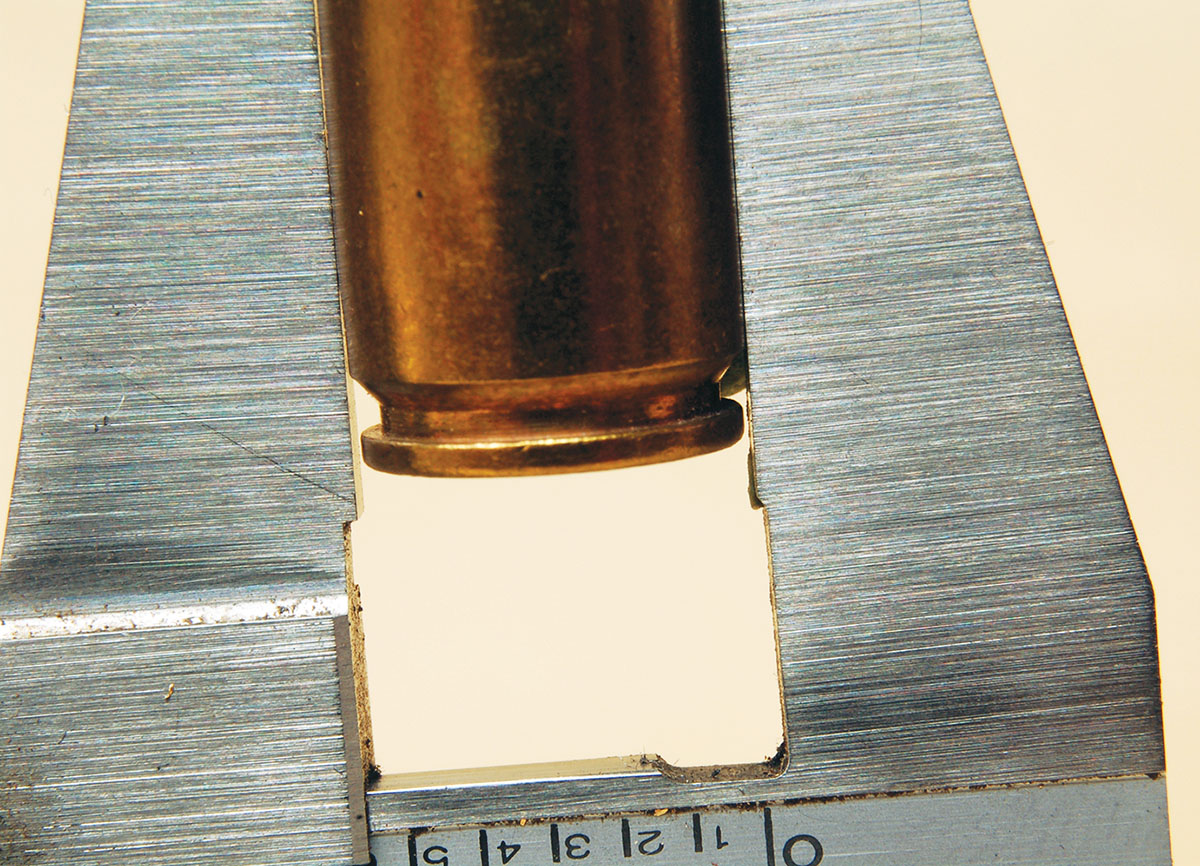
Original load number three was a Winchester 150-grain Power Point (conventional cup-and-core construction) at 3,150 fps – faster than the 140-grain FailSafe! The 270 Winchester had various 150-grain bullets listed at 2,750 to 2,950 fps muzzle speed.
Sales of the 270 WSM, or any of the 404-based rounds, did not take off immediately because of mechanical problems. Cartridges popped out of magazines when feeding and when the bolt was pulled back hard. A new action size was really needed with new magazine dimensions, but modifications to existing products seem to be working. These are definitely not cartridges for which just screwing on a new barrel completes a conversion.
As time passed, the 270 WSM became more popular. By 2010, there were some 14 factory loads available from Nosler, Winchester and Federal. Just before the COVID-19 disaster, that figure was 27 different loads from seven cartridge makers. The speed of 130-grain bullets was up to 3,300 fps maximum, 140 grain up to 3,200 maximum while the 150 grain stayed at the same 3,150 fps tops. Here, I should also mention that at the same time, the standard 270 Winchester had 63 loads available with a top 130-grain speed of 3,200 fps (Federal), the 140 grain at 3,090 fps (Hornady) and 150 grain at 2,850 fps (Winchester).
Some wish to compare the 270 WSM to the 270 Weatherby Magnum with its 26-inch barrel. The Weatherby adds 100-150 fps to 270 WSM muzzle velocities. The 270 Winchester is totally satisfactory for all North American game except for moose (though a lot of them have been taken by the 270 Winchester) and big bears. A 270 WSM is a little more satisfactory and the 270 Weatherby is a bit more satisfactory yet.
The real question is whether ammunition will be available in the future. Will there be enough 223, handgun and rimfire to meet demand while still producing all the new rifle rounds of the past 20 years? We will have to wait and see.
.jpg)


